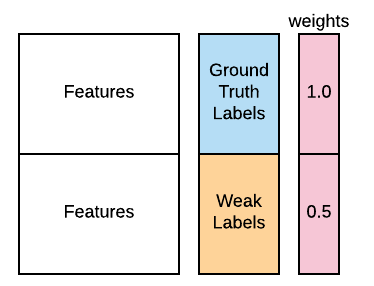Labels, weak labels and truth
Designing Machine Learning Workflows in Python

Dr. Chris Anagnostopoulos
Honorary Associate Professor
Labels are not always perfect
Degrees of truth:
- Ground truth
- the computer crashes and a message asks for ransom money
- Human expert labeling
- the analyst inspects the computer logs and identifies unauthorized behaviors
- Heuristic labeling
- too many ports received traffic in a very small period of time
Labels are not always perfect
Noiseless or strong labels:
- Ground truth
- Human expert labeling
Noisy or weak labels:
- Heuristic labeling
Feature engineering:
- Features used in heuristics
Features and heuristics
Average of unique ports visited by each infected host:
np.mean(X[y]['unique_ports'])
15.11
Average of unique ports visited per host disregarding labels:
np.mean(X['unique_ports'])
11.23
From features to labels
Convert a feature into a labeling heuristic:
X_train, X_test, y_train, y_test = train_test_split(X, y)
y_weak_train = X_train['unique_ports'] > 15

From features to labels

X_train_aug = pd.concat([X_train, X_train])
y_train_aug = pd.concat([pd.Series(y_train), pd.Series(y_weak_train)])

weights = [1.0]*len(y_train) + [0.1]*len(y_weak_train)
Accuracy using ground truth only:
0.91
Ground truth and weak labels without weights:
accuracy_score(y_test, clf.fit(X_train_aug, y_train_aug).predict(X_test))
0.93
Add weights:
accuracy_score(y_test, clf.fit(X_train_aug, y_train_aug, sample_weight=weights).predict(X_test))
0.95
Labels do not need to be perfect!
Designing Machine Learning Workflows in Python

